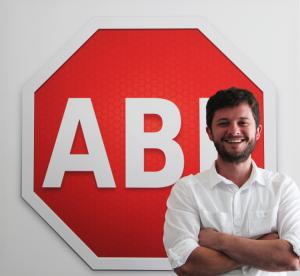Ad blocking is a power player commanding serious attention in the digital media industry table. It’a changing how ads are sold, presenting marketers with new worries and challenges by the day. Some are even wondering if the obstruction of intrusive, distracting and irrelevant ads is the end of Internet advertising as we’ve known it.
Over 198 million people globally run ad blockers each month, according to anti-ad blocking firm PageFair, per Digiday. The permeating hot topic has even penetrated its way through pop culture as South Park and Howard Stern have provided satire on the subject.
Browser extensions like Adblock Plus eat a sizable part of European and American publishers’ business. It’s forcing brands, agencies and publishers to re-think strategies to put the user experience first.
Ben Williams, operations manager for German-based Eyeo GmbH — the parent company of Adblock Plus, which operates under the “surf the web without annoying ads” modus operandi — tells [a]listdaily that a marketer’s solution to the increasing use of ad blocking is simple: Make ads that users accept.

Ben Williams
How did we get here?
It’s been an incredible few years for ad blocking — and by extension for user control and innovation in the ad industry. Ad blocking began in 2006 when our co-founder Wladimir Palant made Adblock Plus. It quickly skyrocketed to the number one browser extension ever.
But that presented Wladimir with a problem: the free Internet depends on ad revenue, so wasn’t ad blocking merely destructive Well, he thought it didn’t have to be. So he tried a few solutions to responsibly block ads before coming upon the Acceptable Ads initiative, which is a certification process for better ads based upon user-generated criteria for ‘acceptable’ advertising. That was in 2011. Since then, both Acceptable Ads and ad blocking in general have once again exploded. Since around 2013, we’ve been averaging three million downloads per week. And the train doesn’t seem to want to stop. In that time ad blocking has become more than just popular. It’s now an innovative force in online ads: with every one of those downloads it is a vote for better ads.
Eyeo GmbH was founded to “pursue a different vision of online advertising.” What is that vision?
That vision is finding ads that ad blockers find acceptable and thereby encouraging better ad formats and innovation. This is how it works:
- Advertisers and publishers apply to have certain — not all — of their ads whitelisted.
- We check to see if they fit our criteria.
- If they do, we whitelist them. If they don’t we either work with the advertiser in question to help get them in line or we have to reject them.
- The ads are whitelisted.
Whitelisting does two important things: it provides us with a way to monetize. Our product is free, so we ask that approximately the top 10 percent of the companies on the whitelist pay a licensing fee after they agree to meet the criteria. Second, it encourages better ad formats. This is our vision for a better Internet — ads that monetize free content effectively and that even ad blockers can live with. We’re not there yet, but the discussion happening within advertising right now — which acknowledges the need to improve ads (see the IAB’s Lean initiative, for instance) — is encouraging.
How scared should marketers be of AdBlockers?
Not at all. We want to work with marketers to develop better ad formats. In fact, up until this point we’ve ran Acceptable Ads, basing many of our decisions on user feedback, surveys and studies. But starting in mid-2016 we will hand over full control of the criteria for acceptability to an independent committee — and we of course want marketers to be part of that committee.
Is there a typical AdBlock user? Who is using it What about mobile?
We don’t collect information on our users, so we don’t really know. But from some of the other studies that have been conducted, the typical ad blocker would seem to be younger, male, educated and tech-savvy. Regarding mobile, I don’t think enough people know they can block ads on their iPhones yet — which is why they should check out Adblock Plus for iOS of course.
How’s native advertising impacting the industry?
If it is labeled clearly and correctly, for example as “advertisement” or “sponsored content,” and it is differentiated from the editorial content, it’s a great development in advertising. Native advertising done right is contextual, nonintrusive and creative.

